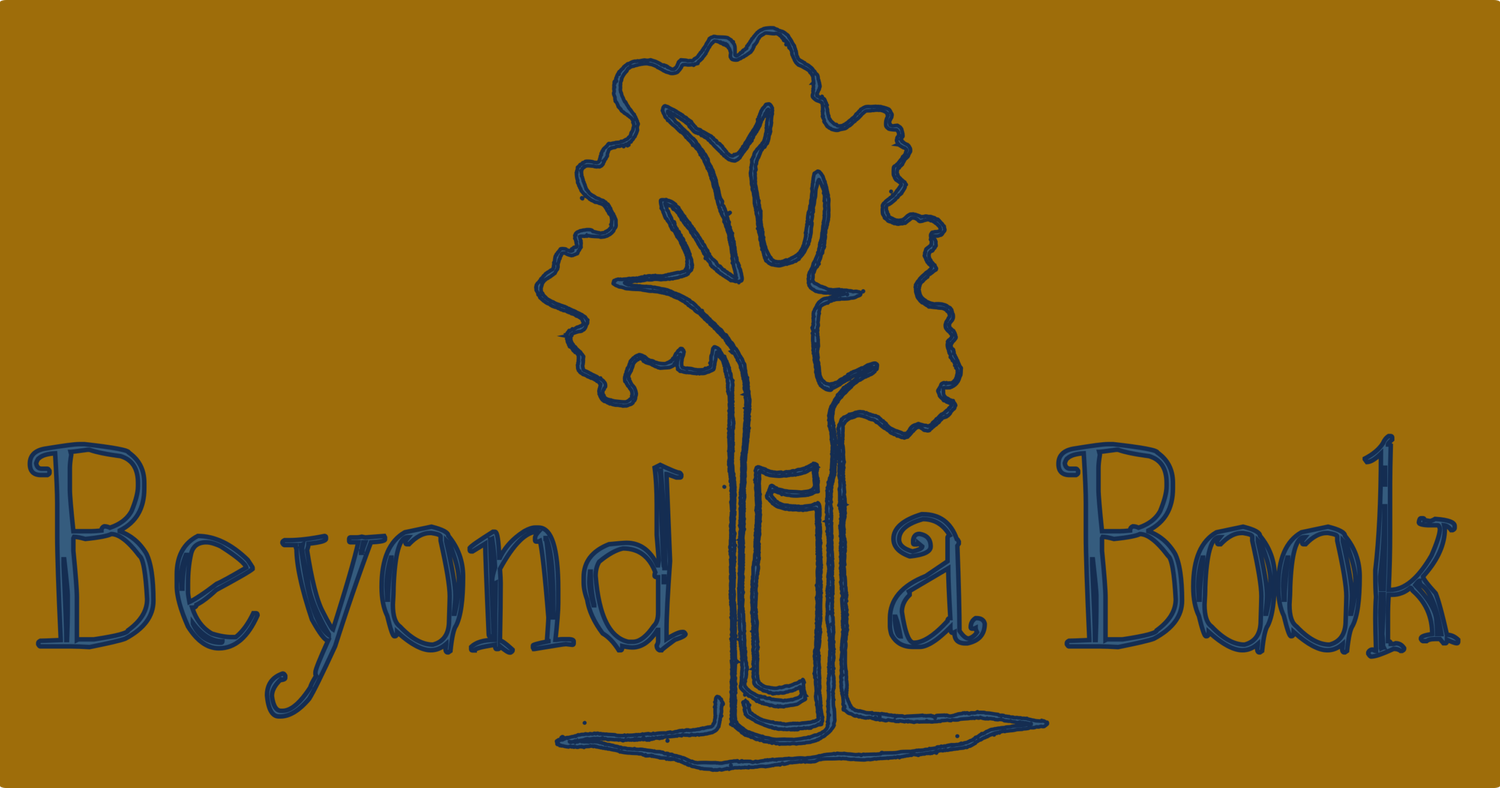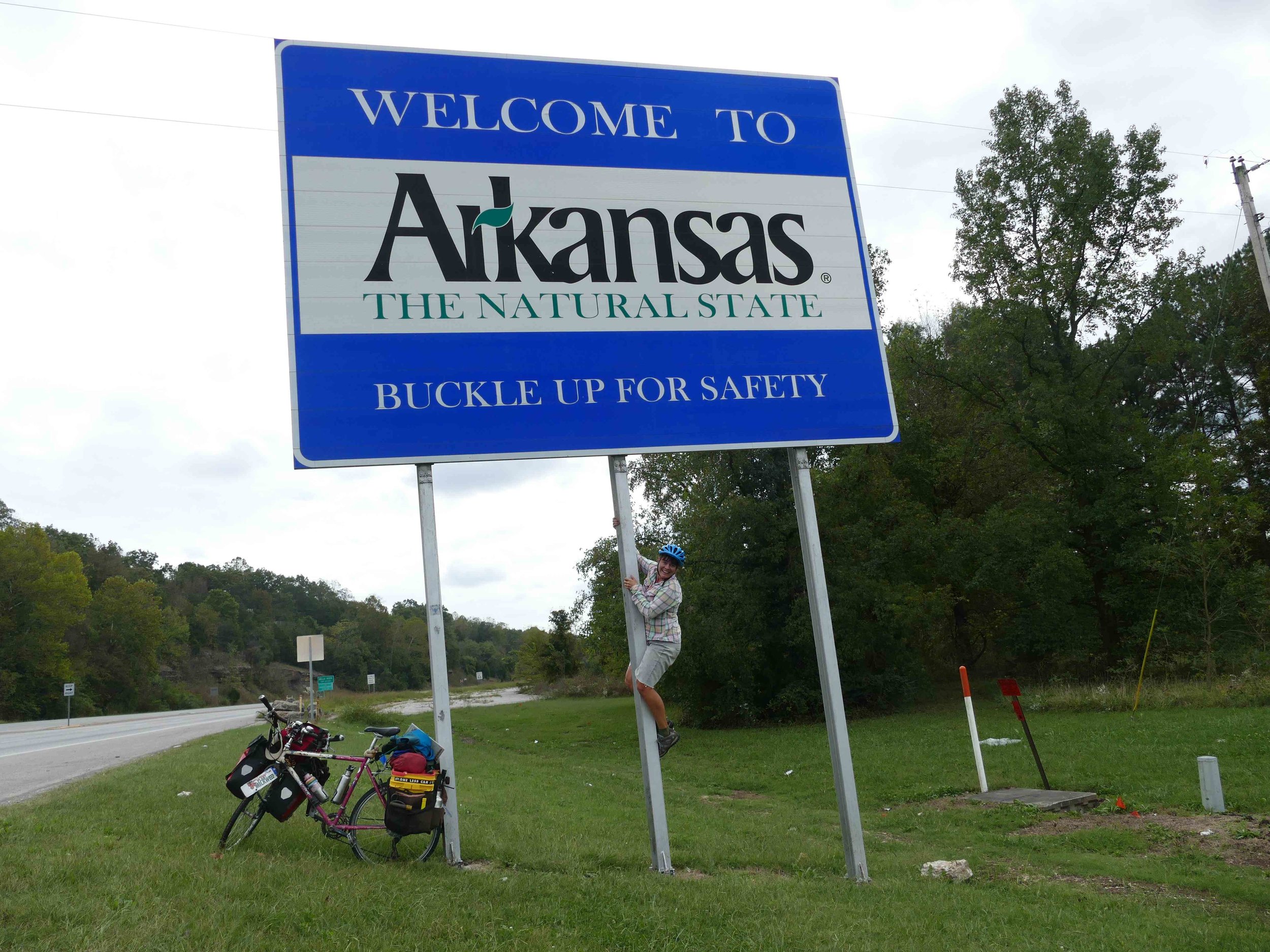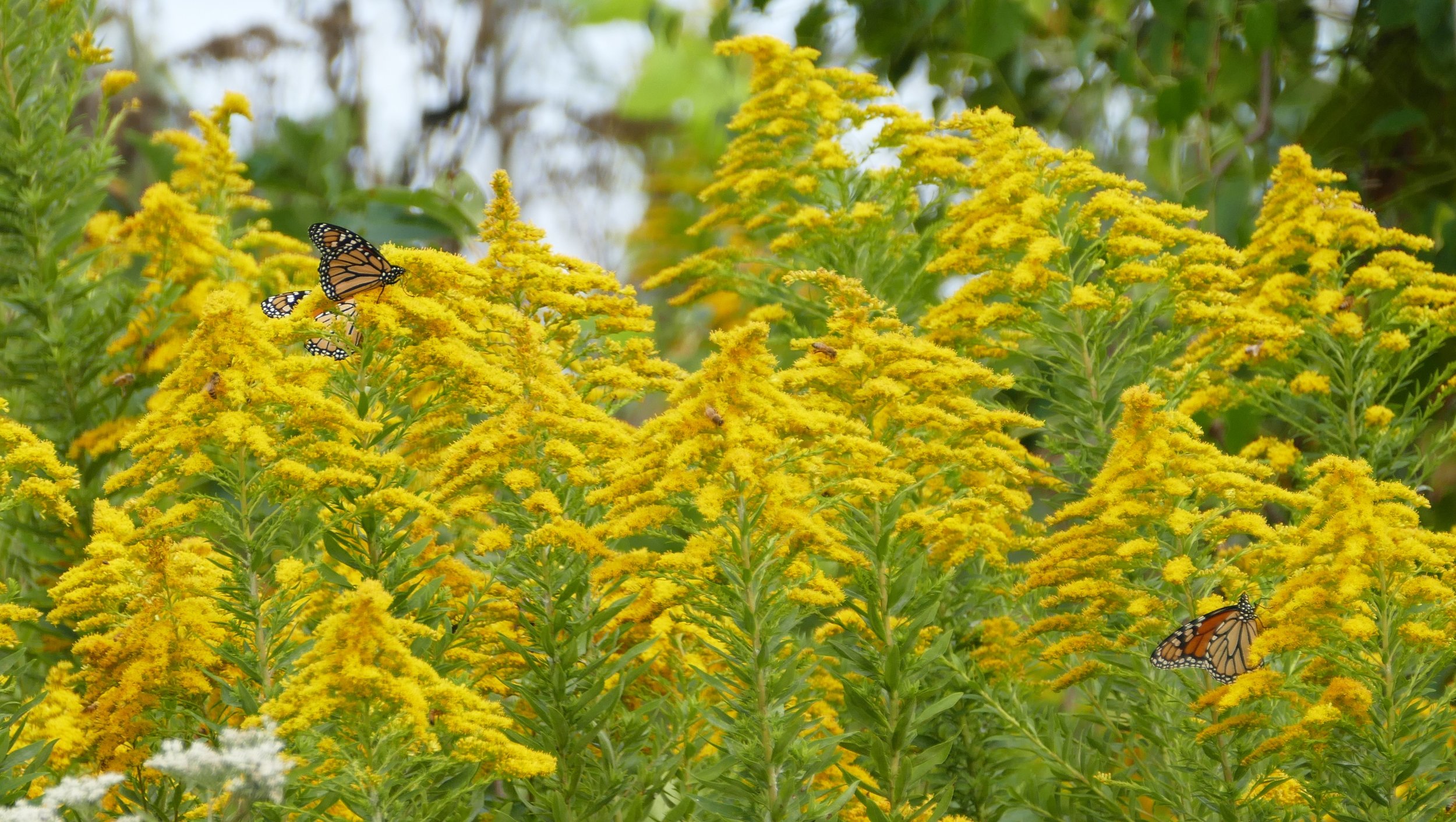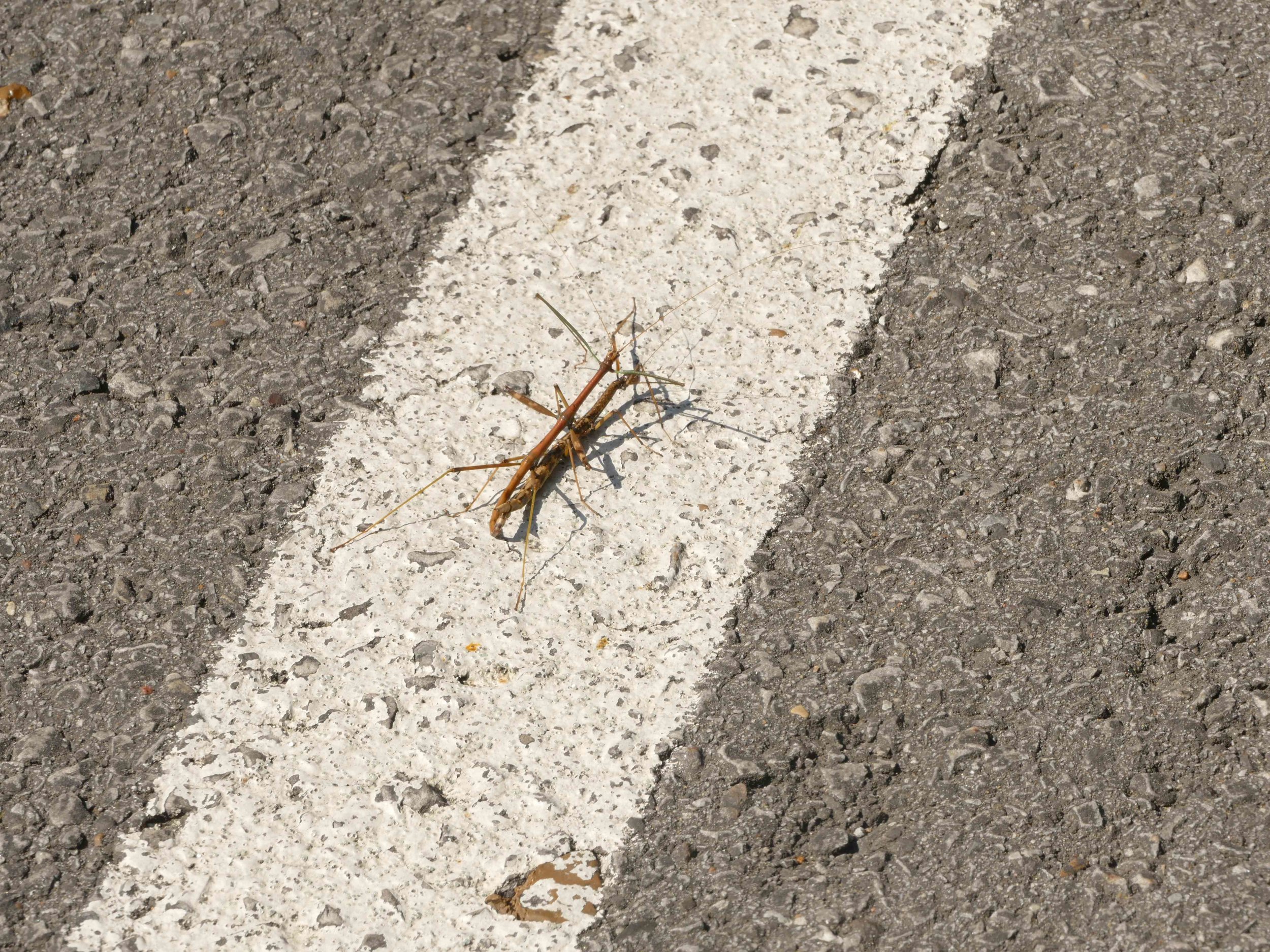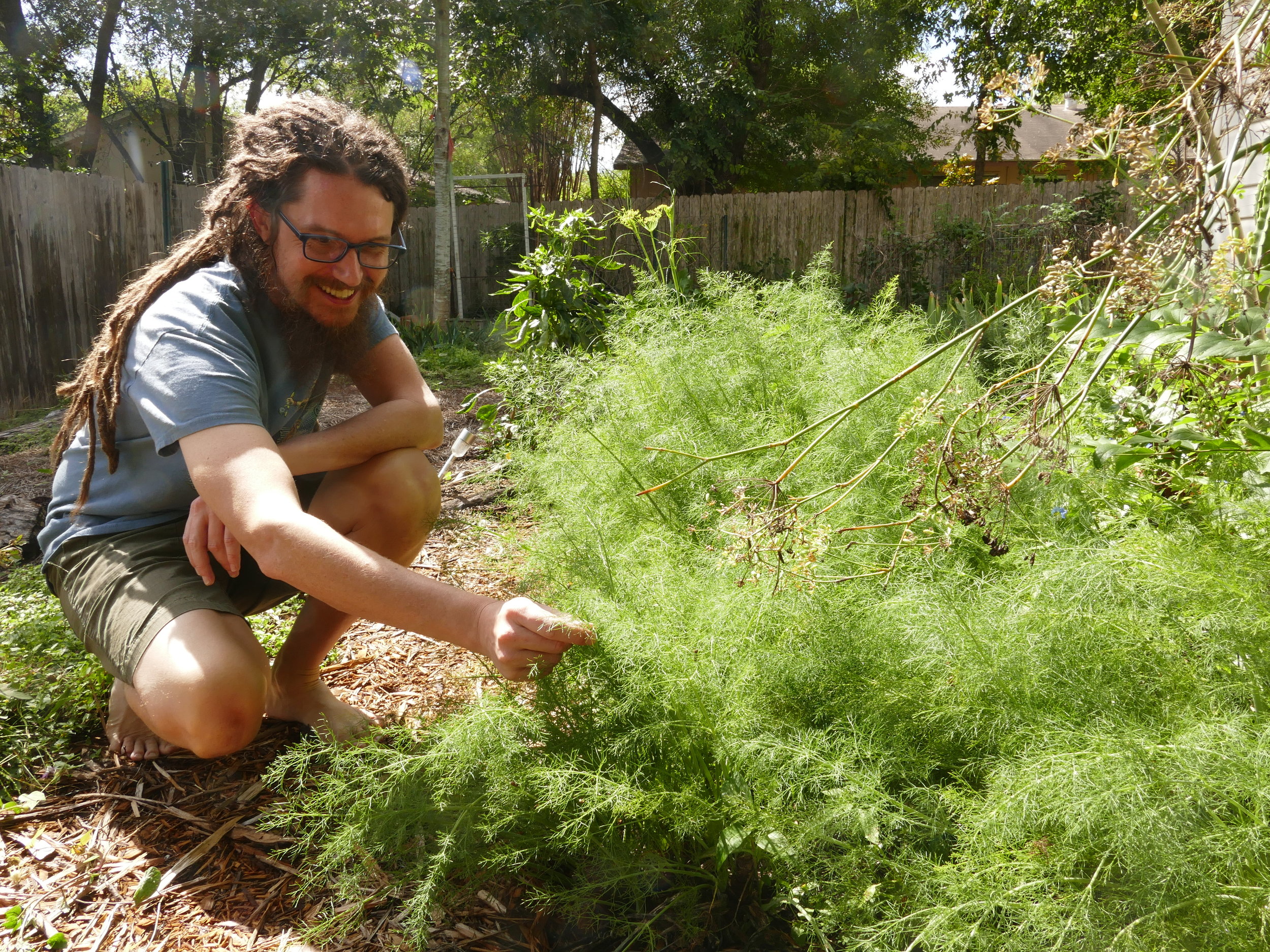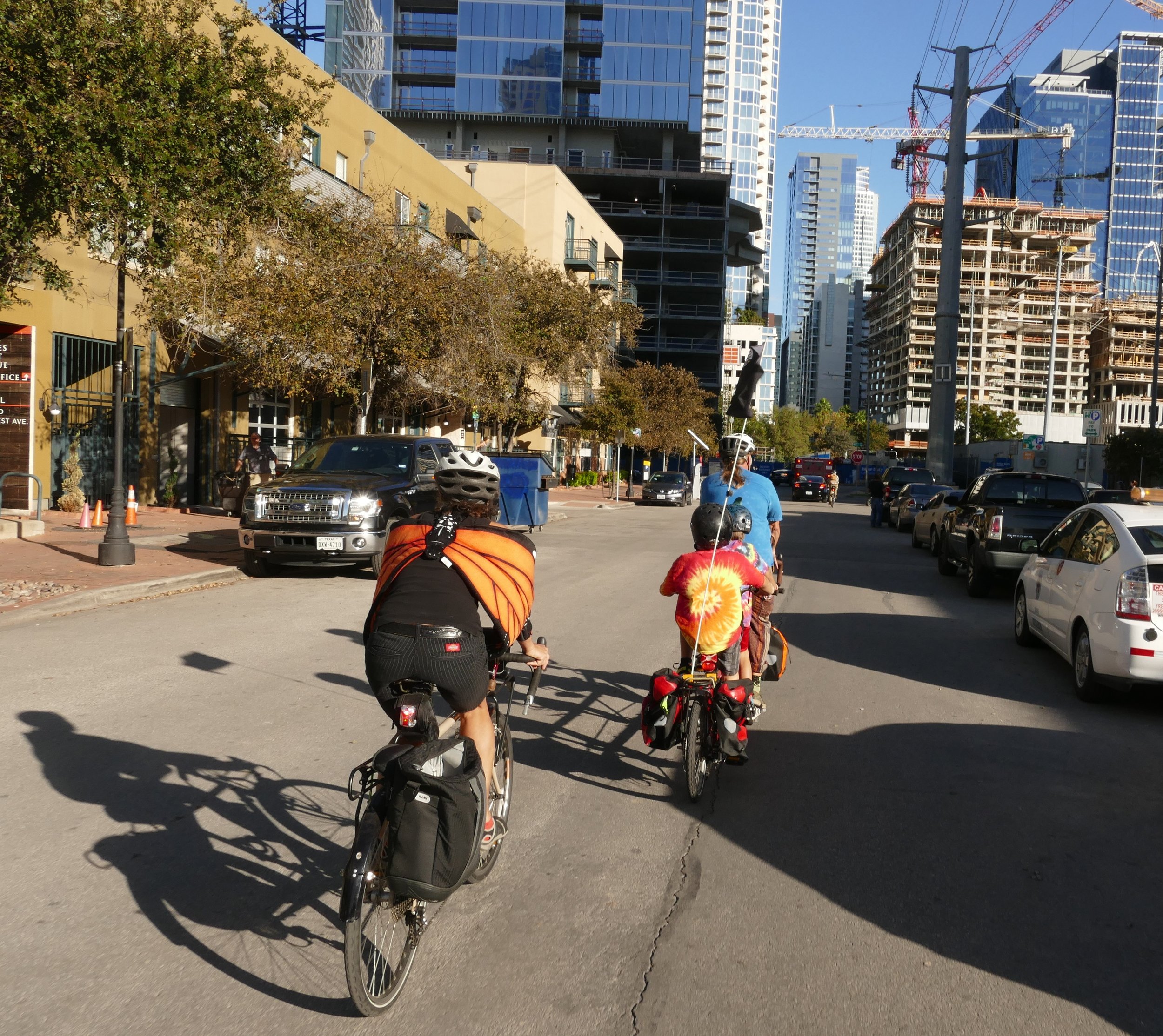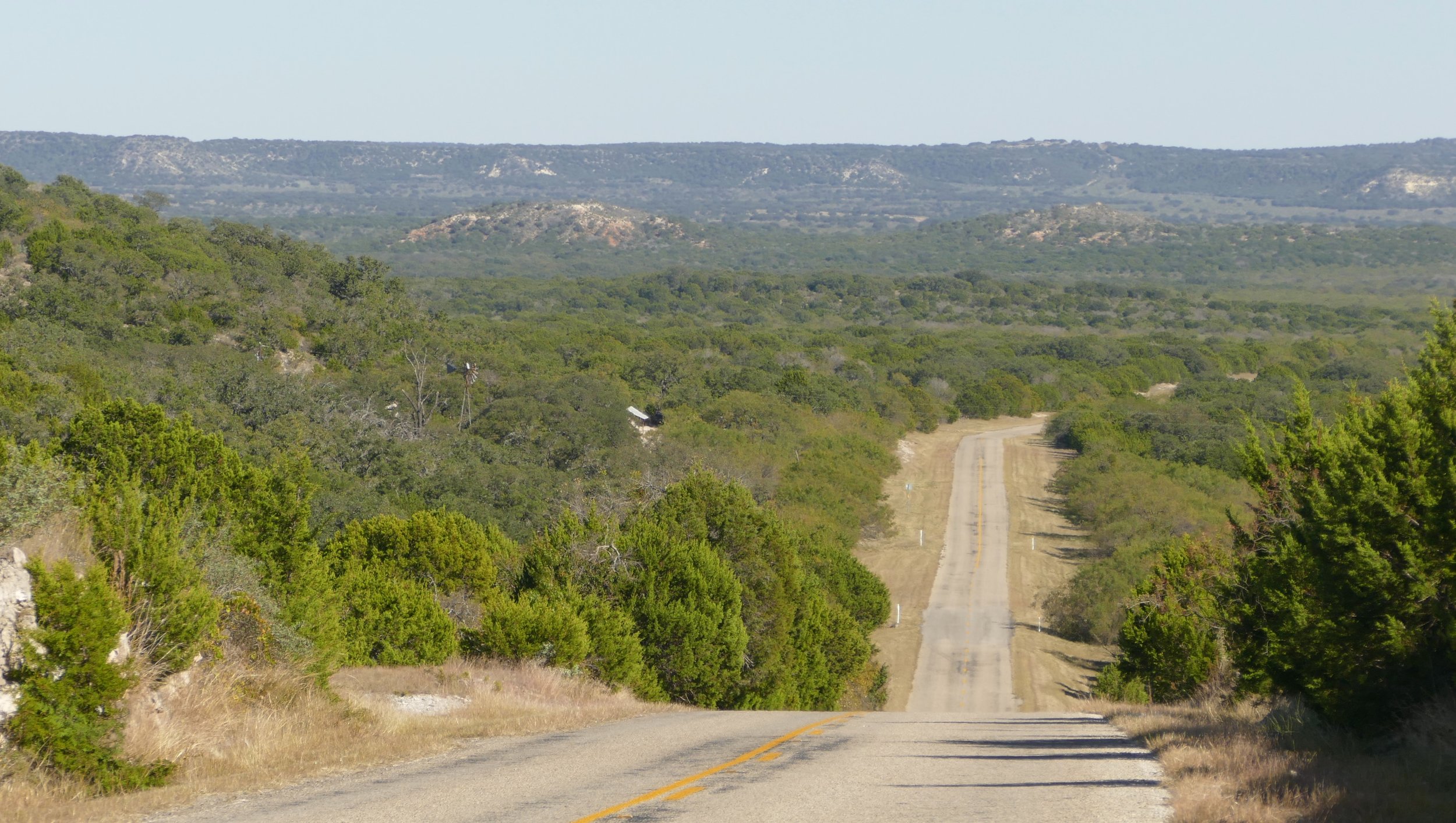After looping and lollygagging through Missouri, I set my sights to Mexico and began a bee line (or butterfly line perhaps) south. I punched through the forested mountains of Arkansas and Oklahoma, and landed in Texas hill country at full speed. I was still seeing monarchs, but knew they would overtake me soon, so my route was purposeful and direct, with scheduled stops only in Arkansas’ NW corner and 700 miles later in Austin, TX.
From the mountains of Arkansas and Oklahoma to the hill country of Texas I tried to stay focused and move south purposefully.
Crossing into Arkansas corresponded almost perfectly with hitting the 8,000 mile mark, so I celebrated both. The highway I was on, huge and dirty and loud, wasn’t all that great for biking, but it connected me to the Razorback bike trail. This bike trail wove through the state’s NW freeway city conglomerate, and eased the tensions that cities and sprawl let loose.
I celebrated making it to Arkansas, the last new state of my trip AND the 8,000 mile mark.
The best miles of the trail were the miles fenced by thick stands of goldenrod. I watched the plumes of the goldenrod's yellow tentacles rise like waves, spill into the wind, and feed clusters of monarchs with their fall blooms. As though it's a good friend, I’m always happy to see the goldenrod waving to me. The pollinators must be happy to see it too. I’ve never met a lonely goldenrod.
I've never met a lonely goldenrod.
My Fayetteville stop was a short one, and after one night and three presentations I was back on the trail. I took the trail to the last stop and then strayed east to visit one of my favorite places on the planet, a secret tucked into the woods and protected by misinformed stereotypes. Arkansas’ Ozark Mountains are as wild, diverse, and adventurous as I’ve ever found. Climbing the steep hills, naked of trees, before entering the safety of public land, I felt like I was returning home. I have lots of homes on this planet, but the most welcoming are escape routes to the protection of wild.
Arriving in the Ozarks felt like I was returning home.
If the monarchs didn’t have me on such a tight schedule I would have spent a month at Tom and Cindy’s house. I would have spent a month watching the vultures climb sky ladders to limestone bluff views. I would have spent a month crawling along the thirsty streambeds carpeted with the crunchy leaves of summer’s ending. I would have spent a month visiting the river as it dug into its riverbed in an effort to linger longer. I would have spent a month chatting with my friends who have carved a life in the woods and whose generosity and good humor are as reliable a medicine as the forest’s quiet refuge. BUT the monarchs were like NOPE, and so I spent two days resting, exploring, and visiting, before starting the 700 mile chunk of route to Austin, TX.
I could spend months exploring the Ozarks and never get bored. Of course, even if I wanted to, the monarchs kept me on a tight schedule.
It is a good thing I was well rested as I started that 700 miles of uninterrupted biking. I didn’t have any scheduled presentations and had picked a date for Austin that left me little room for anything but biking. So, for 11 days I biked. I biked on weaving roads through the Ozark and Ouachita Mountains. I hit straight, flat roads overflowing with shrub brush and wind. I biked about 60 miles a day, except for the day I went 94 because I had a serious tailwind, and the 40ish mile days when I stopped at libraries to plan my Austin schedule.
Those 700 miles blur into a memory of blacktop highway fringed with fences, cutting thorough a generic world of greens, and punctuated by a distant horizon. Within the blur are interruptions of specific memories. The wildlife sightings, a surprise shower, lucky camp spots, expansive sunsets, helpful strangers, and a lawnmower cemetery jump out of the blur.
Out of the blur I remember specific moments like finding a cemetery of mowers. I hope this is a trend!
Wildlife sightings always imprint themselves on my mind. I can remember exactly what I was doing and feeling and thinking when I saw the bear in Canada, the bob cat in Iowa, the skunk in New York, the barred owl in Rhode Island, and the rough green snake in Missouri. On the stretch to Austin, aside from a rainbow of caterpillars, the armadillo and the walking sticks are my most vivid wildlife memories.
I never forget wildlife sightings and the best sunsets.
Loads of people might be unimpressed by an armadillo sighting. After all, they are common and getting more common. But to the unimpressed have you ever really looked at the rat-faced, turtle-shelled, pig- skinned, hawk-clawed cuties? They are a sight to be seen, and when I spotted one using its nose to plow the shoulder of an unremarkable highway, I stopped to watch. After seeing so many decaying car-killed armadillo corpses on this trip it was nice to observe one alive and well, if not cunning and super aware. I watched it dig and root and wander all the way to my feet. I held still while it inspected my shoe with its nose, and then scuttle away, all part of its armadillo plan. When its plan became a suicide mission to rest in the road, I chased it by bike in circles, until we both tired and it ran from the road. If any cars saw this confusion, they likely just noticed me, spinning in circles, creating my own armadillo-like reputation.
Armadillos are cooler than we give them credit for being.
Rescuing the walking sticks also had me running circles on the highway. It would have been easier for me to see a walking stick and not feel a deep sense of empathy for the innocent animals not yet evolved to sense the inherent danger of pavement. I certainly would have gone faster if I hadn’t had to try and intervene! As it was, on the long climb punctuated by walking sticks, I stopped every 100 feet or so to urge them off the road, gather them hastily and fling them off the road, or strategically stop in the shoulder of the road to influence how far over a car might veer to pass (and hopefully miss the walking stick I aimed to protect).
We need crosswalks for walking sticks.
It was easy to fixate on the smashed walking sticks that covered the road like a clear-cut forest. For peace, I instead tried to notice the beauty in the still living. I noticed the walking sticks were of two colors. The males seemed greener, like young saplings, and they were feistier too. They flailed their branch-like limbs more and wobbled faster than their browner, bigger, slower female counterparts. The females didn’t put up a fight, but instead would stretch their front legs out, to create an extension of their abdomen trunks. Sprawled out, they would freeze, transforming into a stick, a branch, or a pine needle before my eyes. I made sure to see the details and remind myself just how incredible it is that an insect can so truly look like a stick. Both the armadillo and walking stick suffer from routine. We see these creatures enough that we don’t see them at all. We take them for granted, and thus, I’m happy I got to see them for real on my pass south.
Can you believe this pine needle is an animal!?
Another wildlife sighting I saw often, but didn’t tire of was monarchs. From groups gathering to feasts on nectar-heavy flowers, to lone specks of orange tacking in the sky, I saw several every day. A few mornings, as I pedaled my first mile from camp, I would see a small cluster congregating in the sky. Each time I assumed I was seeing small roosts breaking camp too, stretching their wings before dispersing for the next push south. When I saw this, I would stop to inspect a probable tree, but monarchs, with wings folded and nestled in protective branches, are hard to spot! Still, I like knowing we were neighbors some nights, the line between following and joining blurring a bit.
Breaking camp, I often notice monarchs breaking camp too.
If I was able to enjoy every monarch I saw, not letting the common become commonplace, then I was REALLY able to appreciate the only shower I had during the 700 mile push to Austin. This shower, a bicycle miracle, graced my trip a day outside of Austin, just when I needed it. I had turned gross after a week of dust, sweat, biking, and camping. Knowing what I called gross others would likely call hazardous, I was doing my best to stay outdoors and not get too close to people.
Bike tours make it easy to stay outdoors alone, EXCEPT when you make plans to ride with a reporter for a day. I figured a bit of filth would add to the authenticity of his visit, but even I have standards. My plan, beyond continuing to wash my face in gas station sinks, comb my hair, and brush my teeth twice daily, had been to find a spigot to discretely rinse my riding clothes and have something of a bird bath before meeting him for a ride. Then the bicycle gods honored me with a shower in the middle of Nowhere, TX.
I figured if I could find the leak in m air mattress using a TX river I could also rinse off (no soap in the river please) and be clean enough for a ride with a reporter.
On a lonely stretch of highway, a sign to see the Falls of the Bravos, interrupted the homogony. I turned down the dirt driveway which held no clues to if it was a campground, public park, state park, or something else. The road ended at a pavilion with working outlets so I plugged in my electronic arsenal and then went wandering. I found a store that was closed, though I couldn’t tell if it was closed for an hour, a day, the weekend, or forever. I also found the bathrooms, which not only were unlocked but included a shower with running water! What more could you want?! I showered - a glorious and much needed shower - and washed my clothes with my soap in the sink. While things dried I explored the river and continued to marvel at my good luck AND at being clean!
I’m not sure if my lack of planning is a product of bike touring, or if bike touring suits me because I don’t need to plan, but they go well together. On a bike, things work out. Showers, camping spots, shady lunch spots, water, food, wildlife sightings, all seem to produce themselves when needed. I can’t look to the wilderness to survive. I don’t know edibles from not, but I think the sense of satisfaction of “living” off the “land” is similar. I turn random parks into functional offices, roadside thickets into homes, abandoned cemeteries into shady picnic spots, gas stations into water stops, and so on. The world might not be built for bike touring, but I like transforming it into one that is.
I like turning non-camping into camping spots. This building was a government buildling that I assumed would be quiet during the weekend.
Turning Texas into a land of camping spots was extra challenging. Texas is a sea of private land cut, divided, and fenced. The tiny islands of public land, welcomed but elusive, can’t provide cyclists with refuge most nights so I had to adopt a hidden-in-plain-sight strategy. This strategy feels like a band aid on a bigger problem though. Public land is what gives people access to nature, and thus the opportunity to enjoy, reason to protect, and ability to understand it. Without public land, how can the citizenry be expected to adopt an ethos of stewardship? Public land is not just for monarchs and other wildlife, public land is how most of us can afford to have a relationship with the Earth which fuels conservation. Not only do we need to think about planting milkweed and natives, but we need to expand our efforts to offer people places to experience Earth.
I made sure to enjoy the public land I could find in TX, which included a swim in the State Park Rio Frio.
But until every county has public land for wildlife and the people I have to be content to camp hidden in plain sight most nights. I had to find spots in the 30 feet of space - between the road and the ridiculously tall fences - that were invisible to passing cars. I did this by taking advantage of the highs and lows in the roads, the bridges and ditches, juniper stands, tall grasses, and sharp curves. I also took advantage of the fact that drivers are going fast, paying attention to the road, and not expecting me. AND even if they did see me, who would stop? Most drivers would likely think my light a reflection of moon, my silhouette a strange shadow, my bike a bit of trash, or that I was some scary, dangerous person not to be messed with. No one would assume what they saw was merely a cyclist camping 10 feet from the road! And thus, I adopt a super power, finding a comfortable, free place to sleep each night, even in Texas.
Camping in plain sight was my strategy for camping in Texas.
I check to make sure cars can't see me, but am confident that since they are going fast and not looking for me, I could likely camp in view without problems.
After 10 nights of camping, and 11 days of cycling, I arrived in Austin, TX tired, dirty, and ready to bust out a mountain of presentations. This stop had been a long time coming and a bit stressful, only because of the logistics of coordinating nine school visits and finding a new place to stay each night to be within biking distance in the sprawling city. Once in Austin the plan had mostly been settled, and all I had to do was tell the story of the monarch and my adventure. I told this story to around 1,400 students. I praised their school gardens, and gave kudos to the parents and teachers dedicated to providing gardens as teaching tools. I answered awesome questions, including “is any of this real?” from a little girl that couldn’t quite believe everything she had been told. I hope every kid can hold my story up as proof that adventurers are normal people that just go out and try. I hope every kid sees a monarch and looks at it with more wonder and reverence. I hope every kid tells their family what the monarchs need, and together the word will spread and gardens will grow.
Creating my Austin schedule was a bit stressful, but with some planning , loads of help, and some good luck, it all came together.
I was welcomed to Austin and treated like a queen... more perhaps a monarch, if you will.
In Austin, one of the most incredible gardens grows at the Lady Bird Johnson Wildflower Center. It was my first stop in Austin, and after my presentation, I walked the grounds in awe. The center is a cross between a native prairie and a botanical garden. Instead of plants being tamed, controlled, and displayed, the gardens, all natives, are invited to flourish, show off, and inspire. There are examples of native gardens, themed gardens, ecotype gardens all woven together with the dancing of pollinators, the curiosity of visitors, and just enough signage to remind you that each plant has a name. The gulf fritillaries buzz orange and silver as the sun plays off their wings. The queens gather together, and with wingbeats can alternate between imposters and a burgundy species all its own. The giant swallowtails hover, and the occasional monarch flushes through the flowers. Each butterfly a participant in the garden and a whisper of the potential each yard holds. Each butterfly grateful for the hospitality.
Lady Bird Johnson Wildflower Center showcases flowers and the pollinators (like these queen butterflies) that feed on them.
The wildflower center shows us the potential of our yards, even if we want the grassy look!
I was welcomed by an incredible degree of hospitality as well. Flitting from house to house I was treated to wonderful meals, creative personalities, comfy beds, warm showers, and help with whatever I needed. At Nathan’s house I found a kindred spirit (and great cook) with a backyard built for wildlife. At Felicity and Paul’s I met two of the most fascinating travelers/life-livers I’ve ever met, and was treated to an impressive meal all things Texas. At Annie’s (a cat I pet sat in exchange for a place to stay) I had LONG conversations with the most talkative cat ever! At Elizabeth’s I enjoyed an A++ meal overlooking one of the most interesting houses I’ve ever stayed at, and got tips from a real author! At Allison’s I was welcomed with signs leading me from room to room, hidden candies, a great meal, and hearty conversation. Every place I stayed was its own mini-adventure provided to me by the magic of the monarch.
Thanks Nathan!
Thanks Felicity and Paul!
Thanks Annie!
Thanks Elizabeth and family!
Thanks sweet house!
Thanks Allison and family AND students!
Beyond places to stay I was treated to monarch magic in other ways. Several schools made me notes, one school provided ice cream, a few treated me to school lunches, and several sent me on my way with treats for the road. After presenting at one elementary school the mom who’d organized my presentation and the school gardens gathered her family up to bike with me across town. Kate, with monarch wings and a utilitarian bike any commuter would drool over, led the pack. Her husband and two kids on a bike made for three picked up speed and had me racing along too. It is great to not think about the route and be part of the pack. It takes me back to my college days where I was always surrounded by crazy bikers with eccentric bikes, all of us confident in each other and able to read the road and the group like a book. There is a magic in biking as a group in coordinated awareness. Perhaps the monarchs feel this as the weave together through the skies.
Kate and her family led me through Austin. Between our three bikes we are quite the crew.
Leaving the city I was on my own again, this time headed towards Big Bend National Park 500 miles to the west. I’d been wishy-washy deciding my route post-Austin and since I had no more scheduled presentations I found a degree of freedom not known on the first 9,000 miles of my trip. With this freedom I decided to detour to the park, though a few days later, I changed my mind.
I made it as far west as Junction, TX, where my northbound route and southbound route overlapped (a junction at Junction!). I’d made plans to stop back by the Native America Seed Farm, not only to say hi to my friends but to enjoy their farm and the desert world surrounding it. It took three days to get there and the last day, a 60-mile day with substantial climbing and headwinds, felt like 200 miles. I arrived feeling weak, snotty, achy, and sick for the first time of the trip. As far as being sick goes it was the best possible timing seeing as I had time to rest and the seed farm was the perfect spot to drink lots of tea and enjoy laziness.
Getting sick, the sixty miles through this land of junipers felt like two hundred miles.
The Native American Seed Farm was not just a place to recuperate, but also enjoy the unobtrusiveness of the farm. Rows of soil lingered where milkweeds and winecups had overflowed months earlier, a testament to the passing of the seasons. The fringe of the farm faded into wild Texas, a mix of green plants hearty with spines and the browning greens of fall. The clouds stacked like a cake in the sky before stirring like an etch-a-sketch for another go. The river trekked downward, carrying turquoise drips in its ripples and pools. I enjoyed the fresh air between bouts of tea, naps, and visits with Bill and Jan, their daughter Emily, and their grandson Fisher. Fisher, born between my visits, reminded me how long I’ve been following the monarchs. Enjoying the family’s stories and progressive perspectives reminded me how the monarch led me to the most inspiring kind of folks.
Enjoying the Native American Seed Farm with Lucy the dog.
During my stay, a cold front blew the whispers of winter across my path. I looked at the forecast which predicted strong winds from the south, and I asked myself, do I want to bike 500 miles with a side wind, an approaching winter, and the remnants of a cold? The answer was no. I decided I’d save my Big Bend adventure for a visit when I could spend more time exploring the area and less time struggling to get there. This trip was about seeing monarchs, and thus, I was going to go where the chances were best I’d continue to see them. So, with growing confidence, I reversed course, cut out 500 miles, and charged into the wind.
Just because I’d cut out 500 miles, didn’t mean things were easy. The winds kicked up and yelled into my ears and pushed against my legs. The highway teased me as I cycled the bumpy shoulder while the close-but-not-close-enough car lanes hummed smooth as butter. I bucked and brooded in the shoulder, but still my approach was slow and steady. With that I arrived in Mexico.
Even when the shoulder turned smooth it was easy for the route to become boring at times.
Of course, about 10 miles from Mexico I changed course again! This time I decided to avoid the main highway from Laredo to Monterrey. I had already cycled that stretch once before, and thus it presented itself more as a chore than an adventure. Looking at Google Maps I determined the road paralleling the Rio Grande and the Mexican border to have a good shoulder, so I stalled in TX and let the road lead me to a border crossing a few day south at Roma, TX.
The border is layered in so much drama and fictions. Even I was wary as I set up camp or biked at dusk but my experience was nothing but normal. The towns, the scenery, the people felt like the rest of my trip, though I noted southern Texas and northern Mexico were nearly indistinguishable. Another reminder that borders are merely lines on maps.
The border is here somewhere, but it is really just a line on a map.
What was the most pronounced on my ride along the border was not some boogie man and vibe of fear, but instead an ever-increasing crowd of colorful butterflies, not monarchs, but a swirl of yellows, whites, silvers, oranges, blacks, reds and so on. I watched them traipse across the sky as I questioned their destinations, their stories. I could only assume their lives must be just as interesting and intricate as the monarchs. How much better the world would be if we could see the greatness in every creature? That is our job, to spread the word that the world is worth saving.
The diversity of butterflies, as well as the quantity, made the last few days along the border interesting.
From Arkansas, through Oklahoma, and Texas, to the border of Mexico, I observed the change in flora and fauna, the swing of cultures, and the trend to winter. As with my entire trip, I watched the road shift, transition, rise and fall into new worlds. At the border I knew I was entering another world, and 9,300 miles in, with less than 1,000 miles to go, I knew I had entered the home stretch.
